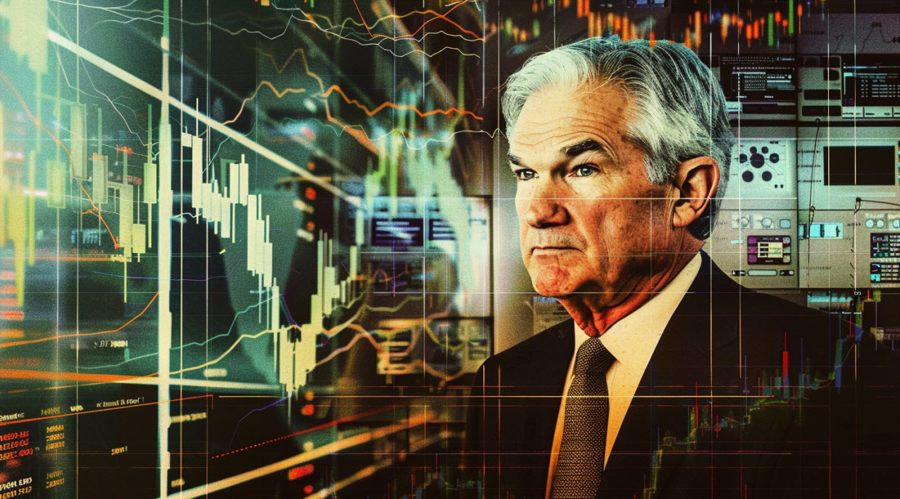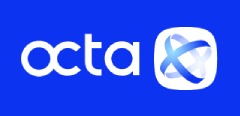
Friday at 10 am ET, Federal Reserve Chairman Jerome Powell will deliver his highly-anticipated annual speech at Jackson Hole in Wyoming.
Current market pricing has been shifting away from 50 basis points; though retaining a high probability of 50 bps before the year is done. For the Sept meeting, the market sees a 75% chance of 25 bps with the remainder at 50 bps. For year end there are 97 bps of easing priced in and for this time next year there are 194 bps priced in (that's 8 meetings so almost 25 bps at each).
Throughout his tenure, Powell has always liked to retain as much optionality as possible before launching signals when the data was clear. In this case, he's ready to signal a September cut more strongly than before.
This will come with him expressing 'greater confidence' that inflation is on a sustainable path to 2%. It could also take the form of something more explicit. On Thursday, regional Fed Presidents Harker and Collins both said they were ready to cut. Harker said he was ready to start the process of cutting rates. Collins said the timing seems appropriate to begin easing monetary policy.
If Powell uses that kind of declarative language it would be marginally dovish, though not entirely unexpected.
The destination, not the starting point

I'm less interested in the 25 vs 50 debate for September than indications about the cadence and destination of rates. Harker on Thursday said the end of the easing cycle may put Fed funds around 3%. Powell could also substitute 3% with 'neutral' but in either case it would indicate the Fed is on autopilot. That would weigh on the dollar and give the market comfort that the baseline for each meeting going forward is a 25 bps cut or 50 bps if the economy/employment worsens.
At the same time, it would be no surprise if he once-again said that the terminal rate for policy is likely to be higher than pre-pandemic. This is something I disagree with but we
Monetary policy 'positioned appropriately'
Some Fed officials have recently begun using the language 'posited appropriately' or 'policy is well-positioned'. I think this may be a code word to push back against the idea of a 50 bps cut. The thinking there is that if they were behind the curve, they would need to cut more aggressively.
If Powell says that, I expect a hawkish reaction in markets, which would otherwise boost the US dollar. That said, with just a 25% chance of 50 bps priced in, I wouldn't expect a big reaction. Rather, I think markets will look to the Sept 6 non-farm payrolls report as a stronger guide.
Clues on the economy
The focus has been on the inflation side of the mandate for so long that market watchers have gotten tunnel vision. Expect headlines on Friday to focus on price indications but I think the inflation story is dead and it hasn't mattered to markets for awhile. Instead, I'll be looking for signals on growth. In July, the market grew worried about the Fed falling behind the curve after some poor indications on the services side of the economy, followed by rising jobless claims. Since then, retail sales were stronger, corporate commentary on consumers has been fine and jobless claims have retreated. That's left sentiment on the economy relatively upbeat, but precarious.
Powell is likely to weigh in. Hints from him that conditions are deteriorating would be worrisome, particularly since he's been steadfastly upbeat for two years, despite various period of recessionary worries from markets. If he validates those concerns, expect a dovish market reaction in FX, but also some worries in equity markets.
Recently, Chicago Fed President Goolsbee said he was growing more concerned with employment in a preview of what could be to come. Also look for something more explicit on growth in general.
Other clues
The pre-announced topic of Powell's speech is the "Economic Outlook," which isn't much help but the overall topic of the Jackson Hole Symposium is “Reassessing the Effectiveness and Transmission of Monetary Policy”. That could invite a conversation on lags in monetary policy and unusual factors at the moment like 30-year fixed mortgage lock ins and immigration surges.
It could also touch on the importance of a steady hand. On Thursday, Harker highlighted how business contacts wanted a steady response from the Fed. Something along those lines or hints on efforts to reduce policy uncertainty or volatility would be seen as dovish. That said, Powell will be careful to retain optionality in light of the mis-steps around forward guidance following the pandemic.
What he said on July 31

Markets have been volatile but not much has changed in the underlying economy since the FOMC. At the margins, economic data has been better but the big downward revision in non-farm payrolls yesterday raises some employment risks.
Here were some key headlines from when Powell last spoke:
- If we were to see inflation moving down quickly or more-or-less in-line with expectations then I would think a rate cut could be on the table in Sept
- I can imagine everything from zero to 'several' rate cuts this year
- We have made no decisions about September but broad sense is we're moving closer
- The picture is not one of a slowing or really bad economy
- The chances of a hard landing are 'low'
- "Recent indicators suggest that economic activity has continued to expand at a solid pace"
Past is prologue
Here is a handy guide from Goldman Sachs to the past six years of Jackson Hole appearances from Powell. My take here is that they tend to run with the Fed cycle. When the Fed was easing in 2019, Powell was dovish. When he was tightening in 2022 and staying tight in 2023, he was hawkish.

See also:
- Federal Reserve Chair Powell to retain optionality, more data to come before Sept meeting
- Powell is likely to highlight inflation progress, allows focus on employment
- MUFG: What to expect from this week's FOMC Minutes and Jackson Hole Symposium
- Bank of America on Powell speaking at Jackson Hole - to keep aggressive easing option open
- JP Morgan says the Fed has a green light for a 50bp rate cut in Sep. Here's the trigger

